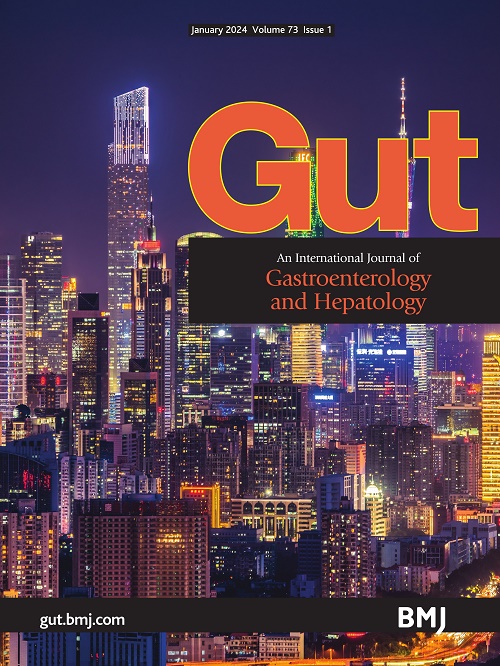计算机辅助定性诊断为肿瘤的小型结肠息肉的组织病理学评估的准确性
IF 23
1区 医学
Q1 GASTROENTEROLOGY & HEPATOLOGY
引用次数: 0
摘要
结肠息肉切除后进行组织学评估是目前的治疗标准。结肠镜内计算机辅助诊断(计算机辅助诊断(CADx))已成为一种可能避免切除后组织病理学的替代策略。然而,这些方法中的每一种都可能受到无法或不准确诊断的病例的限制。我们对一项前瞻性临床研究进行了事后分析,该研究涉及164例连续患者的249例经CADx诊断的小息肉。在这些息肉中,29例在组织病理学上被诊断为“正常粘膜”(11.6%)。诊断为“正常粘膜”的息肉由两名独立的盲法病理学家检查,24.1%的息肉在进行额外切片后被重新评估为腺瘤。除浅表切片(24.1%)外,碎裂(44.8%)和标本制备及处理不当(31.0%)被认为是误诊的原因。重新评估使组织病理学的总体准确性降低至88.4% (95% CI为83.7%至92.1%)。另一方面,在这29例中,CADx诊断所有息肉为肿瘤性,总体准确率为85.5% (95% CI 80.2% ~ 89.8%)。因此,综合方法可以提高诊断的准确性。目前结肠直肠息肉的标准治疗包括病理实验室的分析。然而,这一过程包括切除和取出等几个步骤,其中标本可能会断裂或丢失,以及处理、包埋、切片和最终分析,这些步骤都可能导致错误和误诊。最近的出版物表明,息肉切除术后的最终病理报告确实可能是不正确的,与光学诊断不一致的病例需要进行一系列额外的检查,直到达到一致这种方法……本文章由计算机程序翻译,如有差异,请以英文原文为准。
Accuracy of histopathology evaluation in diminutive colonic polyps diagnosed as neoplastic by computer-aided characterisation
The removal of colorectal polyps followed by histological evaluation is the current standard of care. Intracolonoscopy computer-aided characterisation (computer-assisted diagnosis (CADx)) has emerged as an alternative strategy to possibly avoid histopathology after removal. However, each of these approaches can be limited by cases in which a diagnosis is not possible or inaccurate. We conducted a post hoc analysis of a prospective clinical study involving 249 diminutive polyps diagnosed by CADx in 164 consecutive patients. Of those polyps, 29 were diagnosed as ‘normal mucosa’ on histopathology (11.6%). Polyps diagnosed as ‘normal mucosa’ were reviewed by two independent blinded pathologists, and 24.1% were reassessed as adenomas after additional sections were performed. Besides superficial sectioning (24.1%), fragmentation (44.8%) and inadequate specimen preparation and handling (31.0%) were considered as reasons for misdiagnosis. Reassessment decreased the overall accuracy of histopathology to 88.4% (95% CI 83.7% to 92.1%). On the other hand, in these 29 cases, CADx diagnosed all polyps as neoplastic, accounting for an overall accuracy of 85.5% (95% CI 80.2% to 89.8%). Therefore, a combined approach may allow for improved diagnostic accuracy. The current standard of care for colorectal polyps involves analysis in a pathology laboratory. However, this process includes several steps including resection and retrieval, during which specimens may fracture or be lost, as well as processing, embedding, sectioning and final analysis, all of which can introduce errors and misdiagnoses. Recent publications have indicated that the final pathology report can indeed be incorrect after polyp resection, with cases discordant with optical diagnosis undergoing a series of additional reviews, which continued until concordance was achieved.1 This approach …
求助全文
通过发布文献求助,成功后即可免费获取论文全文。
去求助
来源期刊

Gut
医学-胃肠肝病学
CiteScore
45.70
自引率
2.40%
发文量
284
审稿时长
1.5 months
期刊介绍:
Gut is a renowned international journal specializing in gastroenterology and hepatology, known for its high-quality clinical research covering the alimentary tract, liver, biliary tree, and pancreas. It offers authoritative and current coverage across all aspects of gastroenterology and hepatology, featuring articles on emerging disease mechanisms and innovative diagnostic and therapeutic approaches authored by leading experts.
As the flagship journal of BMJ's gastroenterology portfolio, Gut is accompanied by two companion journals: Frontline Gastroenterology, focusing on education and practice-oriented papers, and BMJ Open Gastroenterology for open access original research.
 求助内容:
求助内容: 应助结果提醒方式:
应助结果提醒方式:


